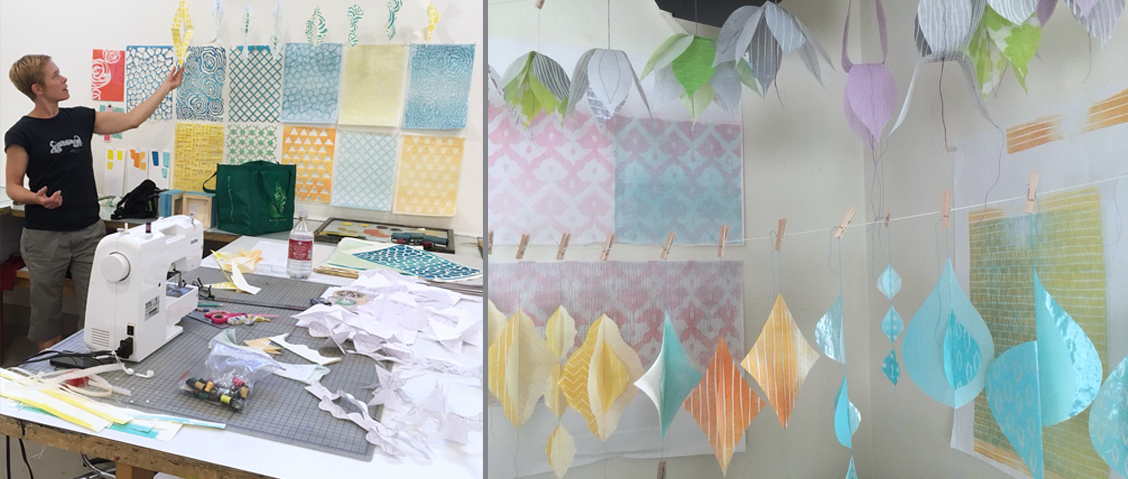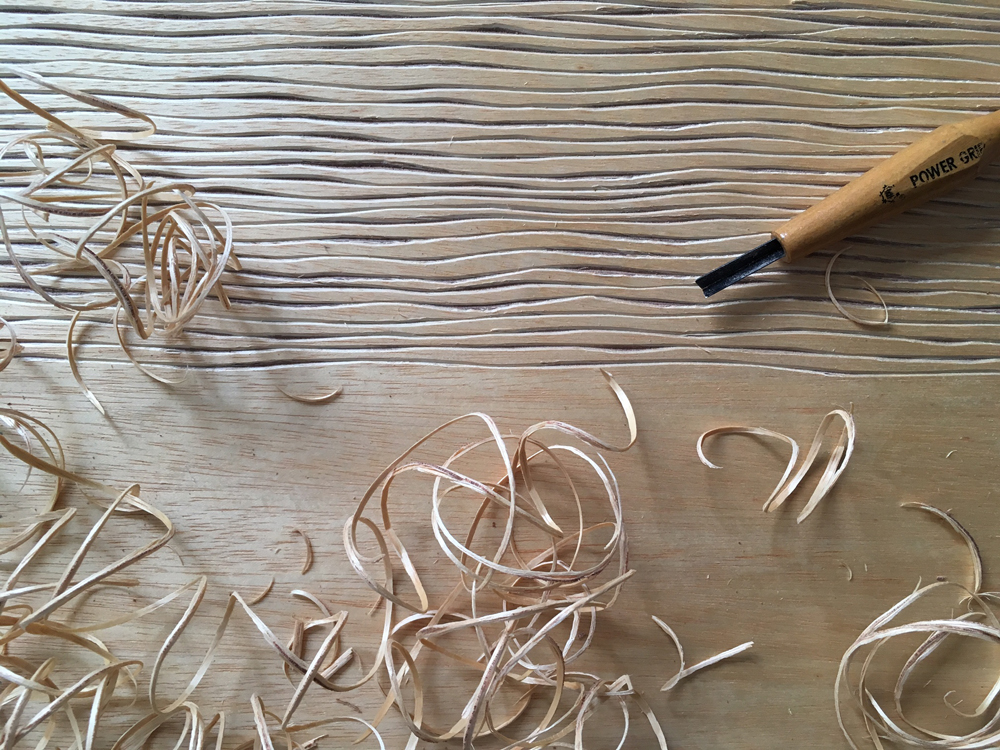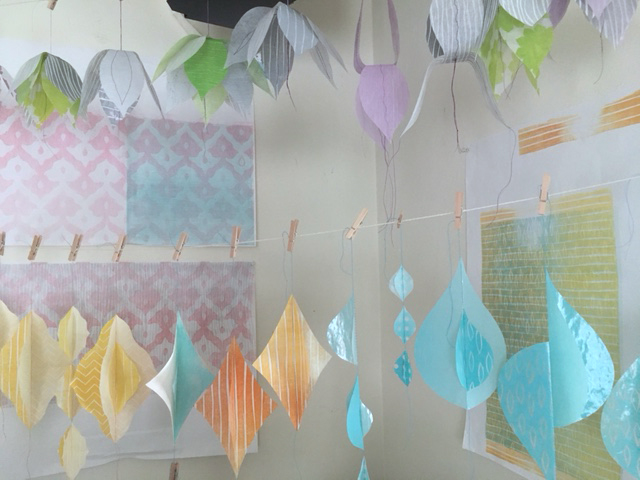Jennifer Ghormley will be in the 3-D Studio August 25-26, with demonstrations from noon-3 pm.
Megan Farlow: Do you think your background has influenced you as an artist? If so, how?
Jennifer Ghormley: I come from a family with a strong work ethic, coupled with a do-it-yourself mindset—really; it's another form of creativity.
Both of my parents grew up in Midwest farming communities, with very limited access to resources or financial freedom. Miraculously, they both went to college and overcame these dire straights, but never lost touch with the moderate, resourceful perspective. One of my grandmother's favorite sayings was, "Use it up, wear it out, make it do or do without." I seek to instill this mode of thinking in my teaching methods, which can be an interesting challenge in today's consumer culture, where many products are designed to be disposable. As a culture, we have become so embedded with an irresponsible attitude of, "just throw it away, and then go out and buy a new one."
There is also a long history of sewers and quilters in my family. I remember my grandmother Olive telling stories of growing up during the great depression, and how they would wear clothes until they would be falling apart, then take those clothes apart and transform the material into new clothes, blankets, or other useful items. Nothing went to waste, everything could be re-purposed. While this is not a genetic or inherited skillset, it is an approach to how one views the world around them. Early on, my mother taught me how to sew and together we would go to the fabric store, pick out a pattern and fabrics, cut down the materials, and sew my clothes. At that time, I am not sure my homemade clothes were viewed by my name brand-wearing peers as 'cool,' however now as an adult, I appreciate and value that process, and can see the impact of those skills in my approach to art making.
When I was in second grade, we moved to Albuquerque, New Mexico, and my parents built a house in a rural area with limited access to resources like other kids or fun things for kids to do. This taught me at a very young age to deal with solitude and to come up with my own projects and things to do to keep myself occupied—my favorite was cleaning and rearranging my room, I probably spent a lot of time just laying around and staring out the window daydreaming, too. Spending large amounts of time alone also helped me develop a strong sense of self and independence, which has benefited me as an adult, but unfortunately made earlier school/social situations rather awkward and somewhat emotionally challenging. Now, as a full time artist and active member of the Denver arts community, I am 'living the dream'; I exhibit my work regularly, many of my friends are artists, I teach for several arts organizations, and I attend arts-related social events frequently.
As a result of all of this background, I embrace the solitary meditative aspect of making artwork, especially the printmaking process. I incorporate thread, sewing, and a stitched line throughout my work, both for practical applications, and as a metaphor for a variety of personal content. I aim to be conservative with my materials, and resourceful with the scraps, or waste materials. One of my most successful 'scrap' projects has been these little recycled sketchbooks/journals that I make and sell. They are fashioned from remnants of the artmaking process, transformed into interesting and useful books, bound together through the sewing machine.
Being instilled with these viewpoints and skill sets has definitely had a positive and creative impact on my artmaking process and teaching.
MF: What kind of reactions/viewer responses are you trying to achieve with your installations?
JG: I would like the viewers who come and see this installation to be inspired and stimulated! It is my hope that those who see my artwork will respond through creative ideas and energy of what all they see or interpret about the installation. I would like for them to create their own paper sculptures that may be somewhat influenced by my work, but that show each person's own unique perspective and personal creativity.
MF: Some of your sculptural work takes on an origami-like shape, do you have a specific inspiration for the forms you create?
JG: My work is a reflection of patterns, shapes and forms I see all around me throughout my daily journey in life. Some shapes have floral or plant-life reference, some shapes come from patterns I see in tile-work or other artwork I see. My goal is not to recreate these things, but rather use them as a springboard for imagination and exploration as I engage with materials and process. The forms that emerge may look nothing like the original reference, which I actually enjoy.
MF: Lastly, can you explain a bit about your artmaking process and how you choose your materials?
JG: The wood I use is selected for its soft, beautiful, distinctive grain.
The papers I use are chosen for their texture, transparency, and responsiveness to being glued, sewn, and transformed into shapes. They must be compliant though the process, but also be able to hold their shape for a long period of time.
The inks I use are an oil-based printmaking ink, and I use a non-toxic cleanup with vegetable oil; I mix my colors from a basic palette of white, yellow, red, blue, black and transparent base.
The colors I chose for this installation are broken down into small groupings:
- The side of the column is in purple and green with gray accents reflect complimentary colors found both in nature and fashion palettes The cone shapes and the wavy lines both reflect patterns found in flowers and in nature.
- The front of the column is in pink, brown and gray, honestly one of my favorite color combinations. The loosely inspired flower 'blossoms' are calm and subtle with a happy splash of pink, (but secretly these colors remind me of sweet squishy bakery goods).
- Finally, for the installation piece, I chose teal/orange/yellow, a color spread that nods to the colors of the Southwest palette, where I grew up. The shapes are designed to flow from organic (teal) to geometric (orange/yellow), symbolizing the transition from nature to structure.



